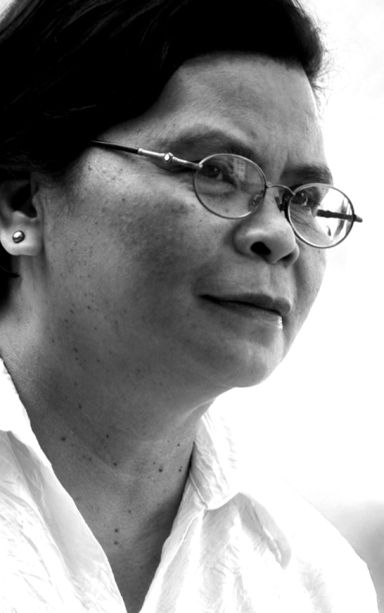
DELA CERNA
April is a very historic month for Cebu and the Cebuanos because three major inspiring events occurred within this month in the history of Cebu and by extension, the Philippines. The Battle of Mactan happened on April 27, 1521 where Magellan died in the hands of Lapu-Lapu and his men; the founding of the image of the Santo Niño from the burned ruins of the village of Pasil by one of the soldiers of Legazpi took place on April 28, 1565; The Battle of Tres de Abril, April 3, 1898, Palm Sunday was the victorious defiance of Cebu revolutionaries against Spanish rule.
Momentous battles or tragic events are usually remembered by the place where it happened like the Alamo or Waterloo, but seldom are they remembered by their dates like 9/11 or the tragic event on September 11, 2001.
Tomorrow we commemorate Tres de Abril or the 1898 Cebu Revolution. After Edsa, I used to reside in Labangon specifically the Katipunan portion because the other route is Tres ( short for Tres de Abril Street). Toddlers brought by their mothers riding the jeepneys first learned the word tres so fast and easy.
The Battle of Mactan sparked the spirit of nationalism in the country. The founding of the Santo Niño image became both a symbol and inspiration in the inauguration of Spanish rule in Cebu and by extension, the Philippines. It would develop into a very popular devotion. The feast of April 28 had a mixed symbolism since it was both a religious and civic-political event, according to Resil Mojares. For the Spaniards, it marked the day Legazpi took formal possession of Cebu in 1565 and is therefore the founding date of the Spanish conquest of the Philippines, an event officially commemorated in Cebu until the end of Spanish rule in 1898.
The 1898 Cebu Revolution or popularly known as Tres de Abril because it occurred on Palm Sunday, April 3, 1898. According to Emil Justimbaste in his “Leon Kilat: The Untold Story of the 1898 Cebu Revolution,” “Cebu’s initial leadership composition did not bear the imprint of middle-class thinking and attitude that characterized Aguinaldo’s cabinet. In the story of Pantaleon Villegas (aka Leon Kilat), we see at one a determination and political will springing from lower-class aspirations and visions. Their defiance of Spanish authority and might never showed any hint of vacillation or compromise that surface in several instances within Aguinaldo’s ilustrado cabinet. Leon Kilat’s forces fought the troops of the Spanish General Adolfo Montero with courage and abandon that expected no quarters from their enemies as they sought nothing less than the expulsion of their colonial masters from the country.”
Justimbaste continues, “Like the initiatives in the provinces that revolted, the uprising in Cebu appeared to be uncoordinated with any central organization in Luzon. They made their own plans of attack and improvised tactics along the way, learning from their own mistakes in the process as they had little knowledge of military theories and limited training to start with. They had to manufacture their own bolos and later arm themselves with rifles and canons confiscated from their enemies. In a sense, it was an indigenous movement that sprang from centuries of oppression and suffering, the final goal of which was the expulsion of their tormentors.”
The battle Tres de Abril was a huge victory for the Cebu revolutionaries. However, five days later on Good Friday, Leon Kilat, the courageous leader at Tres de Abril, would be brutally assassinated by one of his aides in Carcar. I come from the town where Leon Kilat was killed. I grew up learning about the story of Leon Kilat. I appreciated the determined efforts of the late Carcar Mayor and writer Galileo Varga who defied the strong opposition to the construction of the statue of General Leon Kilat at the foot of the hill leading to the town plaza and just across the large house where Leon Kilat was brutally murdered.
Justimbaste ends his book by saying that “The battle of Tres de Abril is memorable not only because Spanish guns were silenced by native bolos. It was here that Leon Kilat and the Cebu Katipuneros had shown great courage and grim determination against Spanish tyranny. It was the start of several battles in the city as well as in many towns of Cebu, and its victory was the crucial spark that turned the tide against the forces of Spain in Cebu.”
“Years later the surviving veterans of Tres de Abril would look back to it as their baptism of fire. And they would remember the young man riding a white horse, invincible with his magical handkerchief and indomitable in his courage.”
For us who did not witness the battle, we need to defy the many tyrannical forces besetting the country – poverty, injustice, violence against women and children, extrajudicial killings and preservation of the environment and our cultural heritage. This is our greatest contribution to our history.
Disclaimer: The comments uploaded on this site do not necessarily represent or reflect the views of management and owner of Cebudailynews. We reserve the right to exclude comments that we deem to be inconsistent with our editorial standards.
